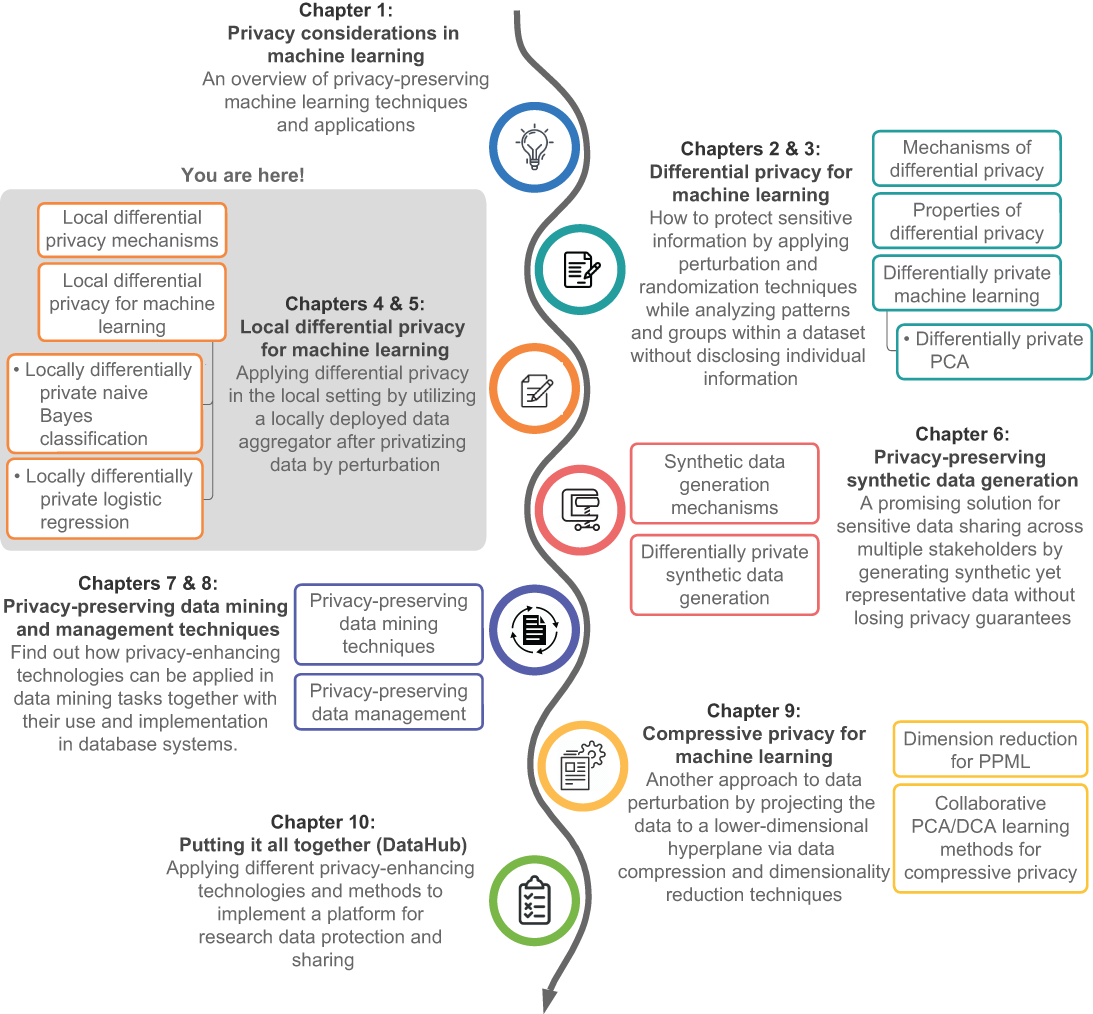In the previous chapter we looked into the basic concepts and definition of local differential privacy (LDP), along with its underlying mechanisms and some examples. However, most of those mechanisms are explicitly designed for one-dimensional data and frequency estimation techniques, with direct encoding, histogram encoding, unary encoding, and so on. In this chapter we will extend our discussion further and look at how we can work with multidimensional data.
First, we’ll introduce an example machine learning (ML) use case with naive Bayes classification. Then, we’ll look at a case study implementation of LDP naive Bayes by designing and analyzing an LDP ML algorithm.

As we discussed in the previous chapter, LDP is a way of measuring individual privacy when the data collector is not trusted. LDP aims to guarantee that when an individual provides a particular value, it should be difficult to identify the individual, thus providing privacy protection. Many LDP mechanisms also aim to estimate the distribution of the population as accurately as possible, based on an aggregation of perturbed data collected from multiple individuals.